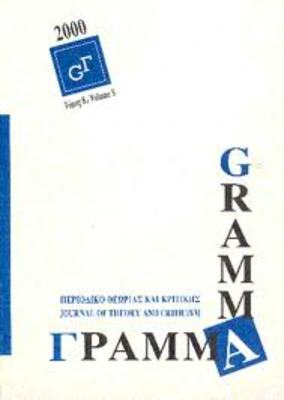Interpretive Multiplicity : Audiences and Mediators on the Shakespearean Stage
Part of : Γράμμα : περιοδικό θεωρίας και κριτικής ; Vol.15, No.1, 2007, pages 49-66
Issue:
Pages:
49-66
Author:
Abstract:
The question of audience (dis)unity has been a central, if not always explicit, element of the theory and practice of drama since its inception. In this essay, I consider the staging of rhetorical expression and nterpretation in Shakespearean drama, whereby the playwright intervenes in the relationship between audience and performance in order to problematizeand retheorize the interpretive dynamics of the theater. There are many such moments of staged interpretation in the Shakespeare canon, but I willfocus here on two plays which deploy subtle and complex strategies of interpretive disunification. In the first part, I offer a brief outline of theoreticaldebates about audience unity, and an overview of the intersections oforatory and dramatic performance. In the second part, I turn to characterswho serve as “internal audiences” or “mediators” on the Shakespeareanstage. I first consider the unifying nationalist rhetoric of the titularmonarch in Henry V, analyzing the staging of resistance to that rhetoricalunification by the always already alienated low characters in the play. Finally,shifting from spoken to silent rhetorical performance, I examine thecomplex dynamic between internal mediator and gestural performance inTitus Andronicus, whereby interpretive ambiguity operates in and destabilizesthe drive toward both linguistic and socio-political unity.
Subject:
Subject (LC):
Keywords:
audience, Shakespeare, theater




